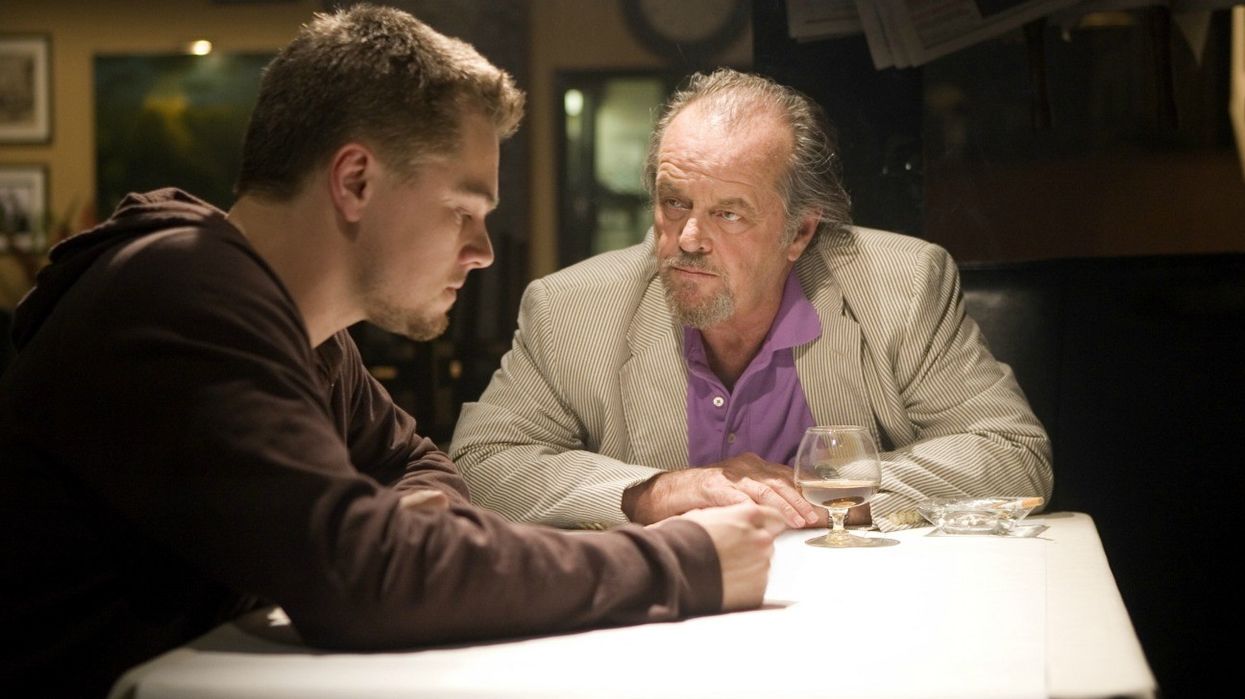Just How Twisted Was the Unused Scene Jack Nicholson Wrote for 'The Departed'?
Jack Nicholson's character was demented, but was he that demented?

One of the most dastardly villains in recent cinema memory is Jack Nicholson's Frank Costello from The Departed. He's not just a mob boss, he's a psychopath who walks around with a severed hand in a bag and tortures his victims before he has them killed. Nicholson is known for liking to take his own route on set, and really building a character from what's on the page into something he can own.
On a recent episode of the “WTF” podcast with Marc Maron, Maron had Departed co-star Matt Damon on to chat about his career. Damon brought up a scene in the movie that Nicholson tried to rewrite to make it so twisted, it didn't make the final cut.
Damon told Maron, “The scene was one-eighth of a page. It said, ‘Costello executes a man kneeling in the marsh.’ That’s all it said. Jack was so excited and said [to me], ‘Wait until you hear what I did.’ He goes, ‘Well, it was an eighth of a page,’ and he goes, ‘I’ve seen that before, so what I did is I made it a woman… and I put Ray [Winstone] in the scene with me.'”
Damon goes on:
[Nicholson] goes, "We’re gonna keep in this same shot, I’m not gonna add any time or money to the schedule. But I shoot her in the back of the head, and she falls over. Now, you could end the scene there, but if you keep the camera rolling, I turn to Ray and I say, 'Geez, she fell funny.' Now, that’s a very sinister line. It suggests that I’ve done this before. There’s a way that people fall. Now you could end the scene there, but if you keep the camera rolling, Ray reveals an axe that he’s holding behind his back. He’s gonna chop her up. So Ray starts to step forward… Now you could end the scene there, but if you leave the camera rolling, I say, 'Wait, I think I wanna fuck her again.' Now that’s a very sinister line.”
Damon's reaction says it all.
“I’m like, ‘Jesus.'”
Damon said Nicholson’s notes didn't stop there.
[Nicholson continued], "You could end the scene there, but if you keep the camera rolling, Ray gives me a look and after a long pause, I go, 'Ahhhhh!' Like I’ve got him. Now, you could keep the camera rolling, Ray says to me, 'Francis, you really ought to see somebody.'"
That's a helluva rewrite for an insert scene. On one hand, it's really fun to see Nicholson love a role so much that he would get that absorbed in the character and want to give a landmark performance. On the other hand, it's easy to see where that might toe a line with tone consistency.
Do you think Scorsese was right to keep the scene as is? Let us know in the comments.











